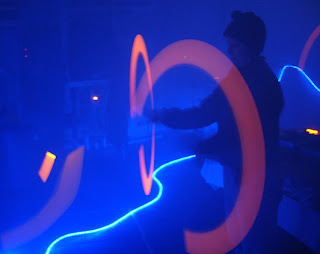We’re racing a storm across the Bering Sea, going 15 knots between stations to try to get as many done as possible before the storm catches us from behind. Fifteen knots feels really fast, Healy shudders a little bit as she goes. The wake is white and green, and as the sea is building, the bow is increasingly sprayed with sheets of white spray. There is a sense of urgency to our going, knowing that we are going to run out of time before we can finish this line.
The Bering Sea has turned out to be just as bad as reputed. One storm after another rolls through, from southwest to northeast. Our strategy is to position ourselves to be close to where we want to work when conditions permit after the storm passes and then to strike and sample as fast as we can. We were weathered out the last time I wrote but then got in about a day of sampling before the next storm hit. That time we were weathered out for about two days, during which time we moved to the far west, along the shelf-break and the Russian border. We were calculating that we could fit in some sampling in between the last storm and the next. And the gamble paid off, we sampled at seven locations across the shelf.
 |
| Krista (l) and MSTC Kurt Stewart (r) recover the CTD earlier today when the seas were still relatively benevolent. |
Last night we sampled at a deep station, off of the shelf. Here the oxygen content in the water dropped off dramatically at depth, becoming of such low concentration that it was anoxic, or virtually devoid of oxygen. This was pretty exciting since we had not expected to see this. It made up for the multiple ripped nets we sustained working there. We think that the pitching of the ship was great enough that it ripped out the nets as the water surged through on the up-swing. Nonetheless, we have copepods and krill on the plankton wheel, going around and around and hopefully munching away on the phytoplankton and microzooplankton in their bottles.
 |
Samples collected to determine oxygen concentration in seawater. Immediately after the CTD/Rosette comes on board, water is drawn from the Niskins and chemicals are added to bind the oxygen and precipitate it as a solid. The more oxygen in the water, the more solid. The sample on the right is typical of what we have been seeing. The three on the left are what we saw in water collected in the oxygen minimum zone. Quite a contrast!
|
 |
Locations where we have sampled so far in the Bering Sea. We sampled the line across the top before the first storm, the line down the middle before the second storm, and the line across from W to E before the present storm.
|
Now there is another monster storm breathing down our back, threatening to stop us from working once again. This is a big storm, occupying much of the Bering Sea and with very high winds and substantial waves forecast. We have moved far enough to the east that the ice edge is once again within striking distance (~150 miles) and we plan to move there to take shelter in the lower waves once we can no longer work.
 |
| A wave breaks and sprays the bow as we move at 15 knots and as the seas start to build in front of the storm. Note that the bow is now essentially free of snow and ice, since we have been working in the Bering Sea where air temperatures are warmer than in the Chukchi Sea. |
 |
| The waves building as the storm catches up to us. This photo was taken looking aft along the starboard side of the ship. |
In the meantime, life on board continues. Today was drill day, when the CG practices responding to a disaster so that if something was to actually happen, they would be ready. Today’s drill was a leak sprung in cargo hold 3, the one just below the lab where the science gear is stored. I never realized that there are really huge wooden “plugs” that are ready to be jammed into a hole.
 |
| Members of the Healy Crew in their gear practicing response to a leak in the hold during today’s drill. |
As I write later today, the storm has caught us. We were unable to sample at the last station and now are beating a hasty retreat to the NE and the ice edge. Sometimes being strategic and hiding is really the wisest course of action! We have tied everything down in case the ship rolls and pitches enough to dislodge things. We are ready for another Bering Sea Monster.
 |
| Krista picks some ctenophores out of a beaker to be used in an experiment. Ctenophores, or comb jellies, are the smallish jellies that we often see at the beach. They are voracious predators on copepods and krill. |
 |
| Donna holds the beaker full of ctenophores. You can see one of them just above the white streak across the beaker. |












































